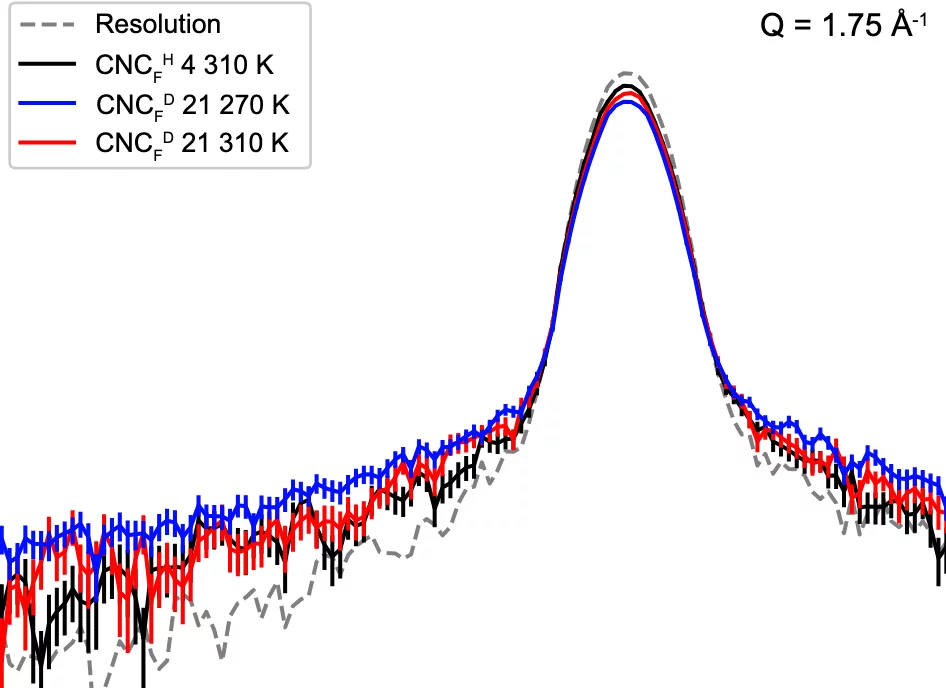Nanocellulose is a promising alternative to fossil-derived materials, but its development is hindered by a limited understanding of cellulose–water interactions. Herein, quasielastic neutron scattering (QENS) is used to investigate how hydration and temperature affect the localized rotations in cellulose nanocrystals (CNC) and the diffusion of mobile water. QENS reveals that the C6 hydrogens and the C6 OH in the surface regions of CNC exhibit an isotropic rotation.
The extracted mean square displacement shows that hydration enhances the overall hydrogen mobility in the cellulose chains. The mobile water diffusion at 270 K is unaffected by cellulose and consistent with diffusion of supercooled bulk water. At 310 K, the diffusion slows compared to bulk water, consistent with water diffusing on the CNC surface. Decoupling of the translational and rotational motion provides insight into the local cellulose–water motions. The localized motions of the nondiffusing water are found to be coupled with cellulose at 310 K, indicating a more complex dynamics at higher temperature. These findings provide new insights into how hydration modulates hydrogen mobility in cellulose, highlighting the interplay between water diffusion and molecular motion.
Facility: SINQ
Reference: A. Åhl et al, Small Structures, 2500229 (2025)
Read full article: here



